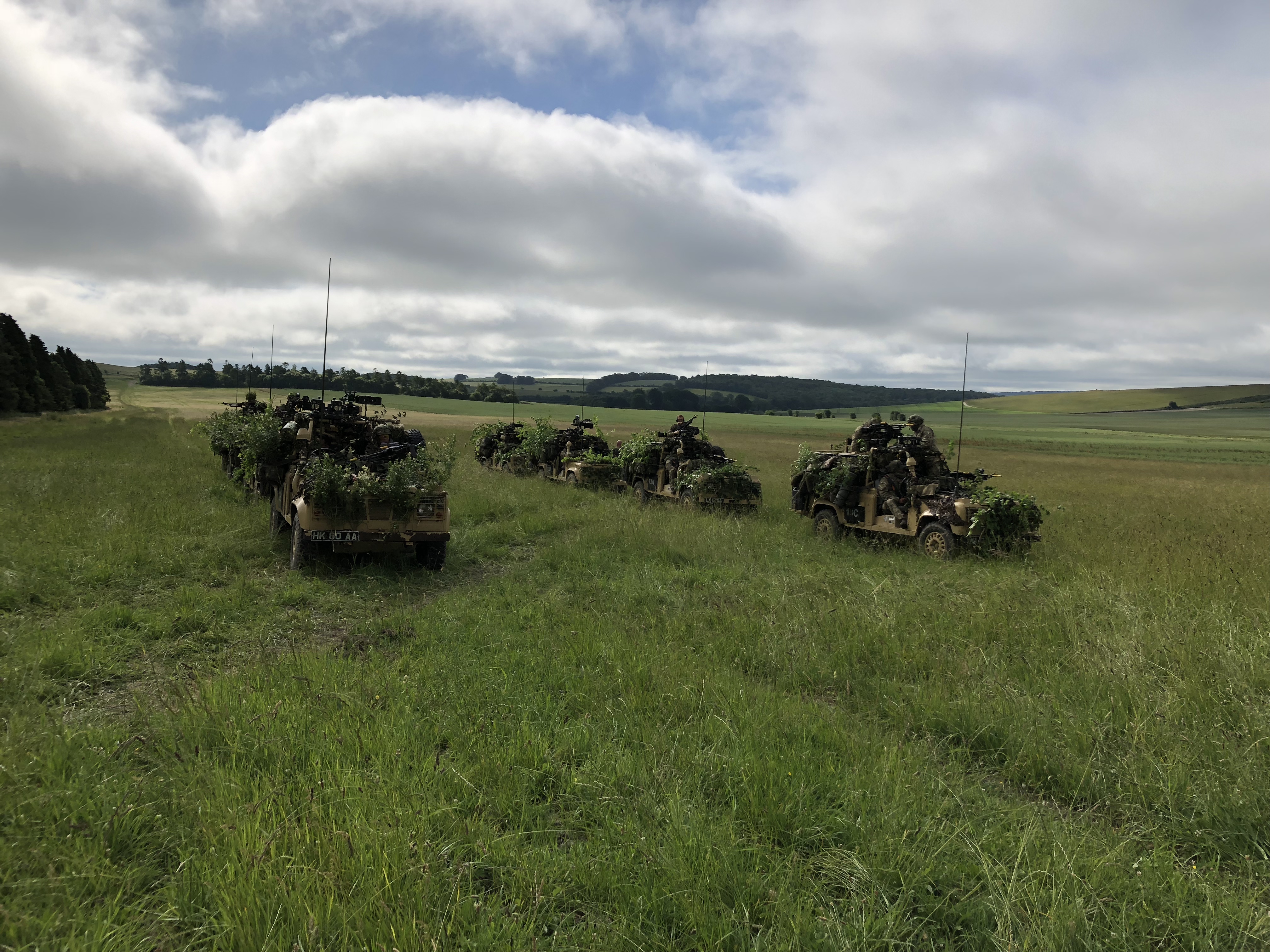
Two Sabre Troops from B and C Squadrons of the Queen’s Own Yeomanry, based in Wigan and Chester, deployed as part of a Light Cavalry Squadron on Exercise WESSEX STORM on Salisbury Plain in July. The exercise, completed only every few years for each Yeomanry regiment, is the key test that the Regiment and its Squadrons based on the North West are able to put a fully formed and effective composite Squadron into a major exercise or operation as part of a regular formation when needed.
B (Duke of Lancaster’s Own Yeomanry) Squadron and C (Cheshire Yeomanry) Squadron are each in the Light Cavalry role, mounted on the RWMIK platform – a cut-down and lightly armoured Land Rover with general purpose and heavy machine guns. The role involves finding the enemy, as in the traditional formation reconnaissance role that the Queen’s Own Yeomanry has historically fulfilled, but now as Light Cavalry it also involves understanding and influencing the enemy, and also offensive action such as raiding high-value and opportunistic targets.
Coming together with troops from their sister A and C&S Squadrons from the North East, a single composite Squadron was formed for the exercise and named the Duke of Westminster’s Squadron, in honour of the late 6th Duke who was heavily involved in the Army Reserve, especially with C Squadron which was a former command of His Grace. C Squadron also provided part of the command element of the Duke of Westminster’s Squadron.
Working as part of 160th Infantry Brigade, the Duke of Westminster’s Squadron operated forward of the exercising Regular 1st Battalion, Royal Irish Regiment battlegroup, sweeping across Salisbury plain initially to find the enemy and reporting back positions and details to drive the Battlegroup’s plan. The enemy was live and free-thinking so the troops had to fight from scratch to find this information across the large scale of Salisbury Plain and against an enemy that wasn’t waiting around to be found and were working to deliberately evade us
The exercise’s context was a conventional warfighting scenario, so the Squadron was quickly face-to-face with the Royal Dragoon Guards playing the enemy, having to act fast and intelligently to bypass or fight to continue to search forward, finding routes through minefields and over bridges under contact so that the main battlegroup was able to follow through.
The light Yeomanry regiments are now more versatile in their Light Cavalry role compared to the old Formation Reconnaissance Role, so tasks then included isolating urban areas, identifying critical national infrastructure, and offensive action where a farm house was raided in order to find an enemy general attempting to flee.
The Yeomen reported that they enjoyed exercising as an independent Squadron formed entirely of reservists, working in their core role as part of a major exercise. Operating on the larger scale of Salisbury Plain was an experience that most of the Yeomen do not often get, more generally working on weekends on areas such as Catterick which do not permit manoeuvring cross-country in the same way.
This may have been the last major exercise of the Yeomanry mounted in their RWMIK vehicles, as the light Yeomanry regiments are now beginning the transition to the same Jackal vehicle that the Regular regiments use. Jackal has the same principle as RWMIK of being an open, lightly-armoured but high-mobility platform, but it’s larger, more robust and newer technology. There’s a challenge here in the retraining burden but the tactics practised on Exercise WESSEX STORM should translate directly to the new platform.
Feedback from the Field Training Unit, who deliver and mentor the exercise, was excellent and B and C Squadrons went home with a lot of confidence that they know the basics well and are ready and able to go out and do their warfighting job effectively as part of a Regular formation when needed.
By Captain Chris Seaton, Second in Command, C (Cheshire Yeomanry) Squadron The Queen’s Own Yeomanry











